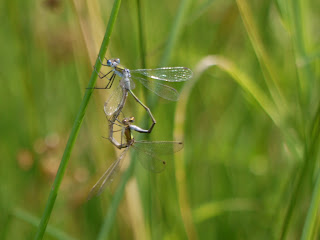
The greeny yellow of this first moth
helps a lot! It is the brimstone moth and is said to be very common and
in this part of the world there can be three broods a year. Its not as
delicate looking as its butterfly counterpart, but still eyecatching -
and there have been several of these in the trap. Alongside several
pepper moths was this common white wave moth - a more butterfly like
creature than some of its kind.

And then the lime-specked pug- a group I have not looked at much, but the wide open wings held away from the body are the characteristics of this particular creature.
And another moth that in the past I would have thought to be some kind of butterfly but this is a moth- the Magpie Moth. The books says it "unmistakable" - good for me against the various mottles and brown moths I have yet to identify and it is very pretty. Again a common creature- but not one I had seen until this week. It tends to act dead when trapped - it was good to read this and watch the little insect recover and fly off with no problems.
And last but not least- other insects also go into the trap - often beetles. wasps and daddy long legs. Today there was this large Rove bettle named Nicrophorus Investogator- some books also refer to it as being one of the Sexton beetles- the link being just as sextons dig graves these bury food - the dead bodies of young birds or mamamls and lay their eggs on- the rotting remains then being for their larvae to dine on. They are said to be able to smell a dead body at 2 miles. It made a very strange creaking noise when disturbed and I cannot say I was much endeared to t- although to everything there is a place. Back to dragonflies I think- and another treat last evening as sitting on our terrace with a nice glass of chilled white wine a large southern hawker hunted around us for a good 15 minutes - much prefer this to the Sexton!


















































